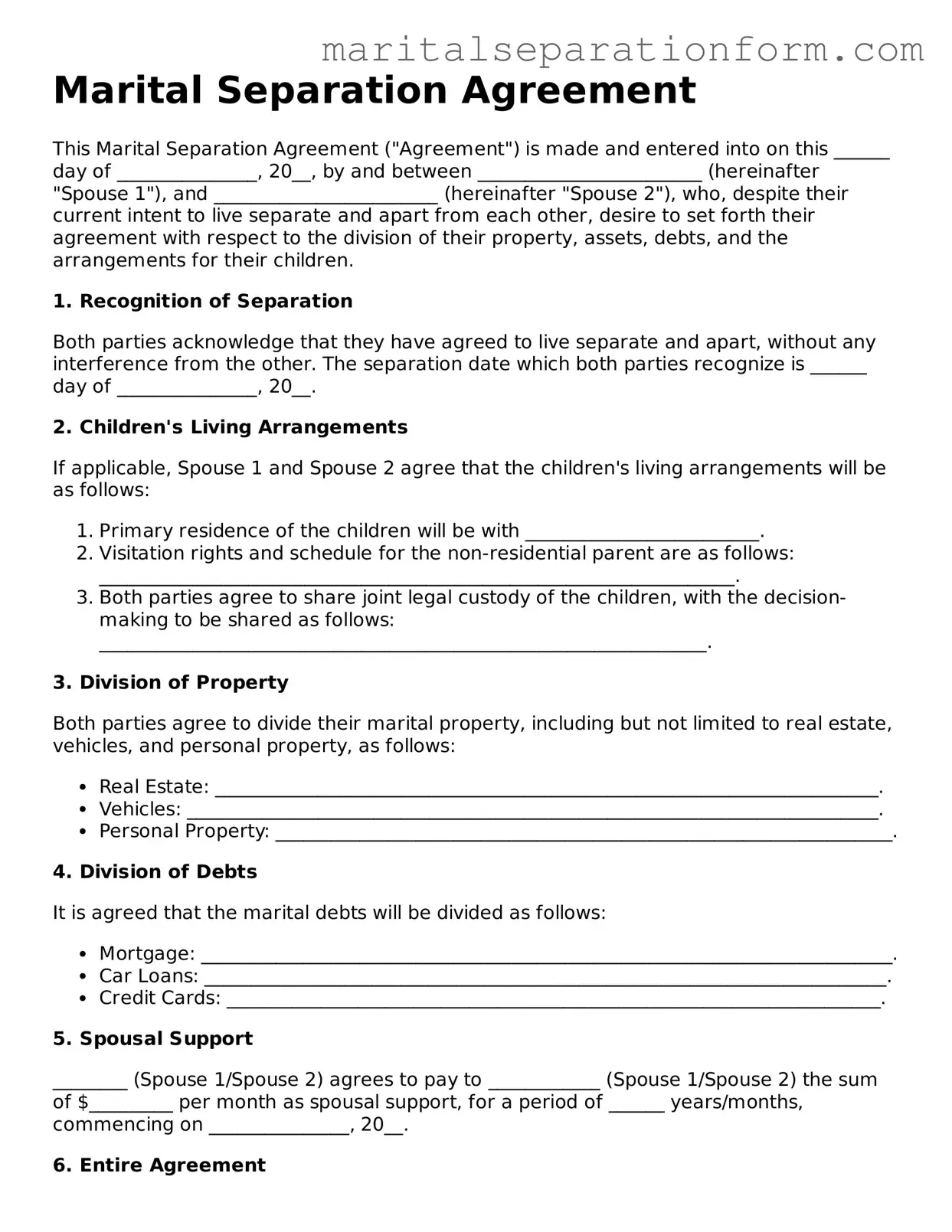Marital Separation Agreement
This Marital Separation Agreement ("Agreement") is made and entered into on this ______ day of _______________, 20__, by and between ________________________ (hereinafter "Spouse 1"), and ________________________ (hereinafter "Spouse 2"), who, despite their current intent to live separate and apart from each other, desire to set forth their agreement with respect to the division of their property, assets, debts, and the arrangements for their children.
1. Recognition of Separation
Both parties acknowledge that they have agreed to live separate and apart, without any interference from the other. The separation date which both parties recognize is ______ day of _______________, 20__.
2. Children's Living Arrangements
If applicable, Spouse 1 and Spouse 2 agree that the children's living arrangements will be as follows:
- Primary residence of the children will be with _________________________.
- Visitation rights and schedule for the non-residential parent are as follows: ____________________________________________________________________.
- Both parties agree to share joint legal custody of the children, with the decision-making to be shared as follows: _________________________________________________________________.
3. Division of Property
Both parties agree to divide their marital property, including but not limited to real estate, vehicles, and personal property, as follows:
- Real Estate: _______________________________________________________________________.
- Vehicles: __________________________________________________________________________.
- Personal Property: __________________________________________________________________.
4. Division of Debts
It is agreed that the marital debts will be divided as follows:
- Mortgage: __________________________________________________________________________.
- Car Loans: _________________________________________________________________________.
- Credit Cards: ______________________________________________________________________.
5. Spousal Support
________ (Spouse 1/Spouse 2) agrees to pay to ____________ (Spouse 1/Spouse 2) the sum of $_________ per month as spousal support, for a period of ______ years/months, commencing on _______________, 20__.
6. Entire Agreement
This Agreement contains the entire agreement between the parties regarding their separation and supersedes any prior understandings, agreements, or representations by or between the parties, written or oral, that may have related to the subject matter hereof.
7. Governing Law
This Agreement shall be governed by and construed in accordance with the laws of the State of _______________, without giving effect to any choice or conflict of law provision or rule.
8. Amendment
This Agreement may only be amended, modified, or supplemented by an agreement in writing signed by each party hereto.
9. Signatures
This Agreement has been executed by the parties on the dates indicated below:
_________________________ _________________________
Spouse 1 Signature Date
_________________________ _________________________
Spouse 2 Signature Date
